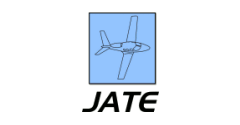Abstract
According to the Aircraft Owners and Pilots Association Air Safety Institute, 264 accidents were identified as continued visual flight rules (VFR) into instrument meteorological conditions (IMC), during the past ten years. Approximately 89% of those VFR-into-IMC accidents were fatal, causing hundreds of deaths. VFR-into-IMC has been a major concern for the general aviation community, prompting focused efforts. Research, data analyses, outreach, training, and education are recommended practices to address risks associated with VFR-into-IMC. Researchers of the current study sought to evaluate the cause and effect relationship between two training protocols and weather-related posttest scores. A pretest–posttest experimental design was utilized at two testing locations. Participants were randomly assigned to one of three groups: a control group, an interactive online training group, or an interactive workshop group. An analysis of covariance was used to determine whether there was a significant difference between mean posttest scores among the experimental groups while controlling for pretest scores. The treatments did not appear to significantly increase posttest scores after controlling for pretest scores, at either experiment location. Though the results of this study did not yield anticipated findings, much was learned and potentially helpful to general aviation researchers seeking to mitigate VFR-into-IMC encounters. Recommendations for future research and practices are discussed.
Recommended Citation
Keller, Julius C.; Carney, Thomas; Xie, Allen; Major, Wesley; and Price, Matt
(2017)
"VFR-into-IMC: An Analysis of Two Training Protocols on Weather-Related Posttest Scores,"
Journal of Aviation Technology and Engineering:
Vol. 7:
Iss.
1, Article 1.
Available at: https://doi.org/10.7771/2159-6670.1150


